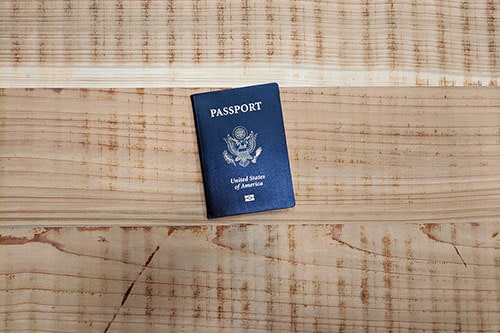Expat 101: Moving Pets
When moving overseas, whether for work or pleasure, the careful transportation of pets is often a key consideration. In order to properly describe the process of pet relocation, I’m going to make a few assumptions: the pet in question is young and well enough to make a move, and the hosting country will theoretically accept pets. And, the pet is also part of your family enough to go through the ordeal of a move on your end. A goldfish may not make this cut in your household, but your beloved fur-baby probably will.
Very broadly, this is what happens when you move a pet abroad (as our experience is US to UK, this description is heavily based on our experience). Pets need to be cleared through a variety of health inspections and vaccinations, which must be administered by an FDA-approved vet (why FDA? Who knows… a weird quirk of the system). The host country will not accept documentation from other vets, so finding an appropriate vet is key.
The clearing and acceptance process happens on a very, very strict timeline. For example, our pup Basil had to be microchipped for our move, but this had to happen at least 3 months before we left the US. He also needed one vaccine that was to be administered no more than 10 days before departure but no less than 5 days. Plus, lots of this paperwork needs to be safely at the airport with the pet clearance people a specific number of days prior to departure (in our case, 2 business days I think).
We sat down with our vet at the 3 month mark and mapped out a plan of appointments and vaccinations so that we had the best chance of clearing UK customs with our pup. Once the paperwork is in order, your pet leaves the country (being on the same flight is not guaranteed due to lots of rules about what kinds of cargo can be shipped with pets on board…no food or human remains can be on the same plane).
Once you and your pet have arrived in the new location you go to the designated location, and, assuming that your paperwork is complete, your pet clears customs. Some countries require a quarantine period, but the UK’s policy of a 6-month quarantine went away in 2012. We picked up Basil about 2 hours after his flight landed and we were on our way.There are a bunch of questions that inevitably arise when considering moving your pet around the world. Here are a few that we’ve been asked repeatedly and our, non-expert but well researched, answers.
1. How do you know if your pet will do well with the move?
Short answer, you don’t. Our vet mentioned that at specific ages (very old and very young) the sheer time in a crate may not be feasible for a particular animal. Lots of countries don’t want to accept animals with severe health issues (and obviously if they’re contagious in any way), so your pet must be generally healthy.
If all those boxes are ticked, you inevitably move in the direction of emotional stability, and even though I anthropomorphize with the best of ‘em, it’s impossible to know how one animal will handle the travel. That said, I have never heard a horror story, so my guess is that the vast majority of pets are just fine – the lack of short term memory certainly helps!
2. Should you process the paperwork yourself or hire a third party?
This is a big question and one that should not be taken lightly. There are many third party companies these days that are literally in business to move pets around the world. They help with the paperwork, transport to airports, provide clear requirements and timelines, and basically help with the huge headache that comes when you’re dealing with rules and regulations of 2 countries, airlines, airports and various government agencies.
In our case, we decided to hire a third party Pet Relocation, that we highly recommend (for anyone moving to or within Australia, we would suggest contacting these interstate removalists). We got quotes from three companies – costs vary based on destination country, size of pet, and other variables. This particular company was a recommendation to us from a colleague and I believe the cheapest as well.
3. How much does it cost?
A lot. Well, if you hire a third party company it costs a lot. For a 25 pound beagle moving from New York to London, the quotes we received were $2,500-$3,500. That doesn’t include the cost of about 5 additional vet appointments, which I’m estimating was about $750 over the course of three months. If you choose to do the paperwork yourself, with the support of a well-informed vet, you can do without the huge cost. There is still the cost of the flight, which is relatively small (I want to say less than $1,000 but we never got a quote). Therefore, at the low end, our costs would likely have been $1,500 instead of $3,250.
4. What else should I know before moving my pet around the world?
I hated moving Basil to London. I found the entire thing stressful and expensive and scary. Basil is 8 years old and hadn’t spent any time in a crate since he was crate trained as a puppy. Re-crate training him (using a proper, approved crate that we also had to purchase…about $150) was annoying. I also had a lot of anxiety about how he would handle the flight – would he get separation anxiety? Would he be crying on the plane in the cargo hold for six straight hours while I watched movies and worried? Would he be traumatized for the rest of his life?
Pets are absolutely NOT allowed to take any kind of medication or sedative during a flight – for health reasons and the risk that the new country would equate a groggy pup with a sick one and deny entry. I did tons of research trying to get around this rule, but couldn’t find any option, so Basil flew entirely unmedicated.
Fortunately, the minute I saw Basil at Heathrow I knew that everything would be fine. He barely acknowledged us, choosing to sniff around the waiting room instead. And he loves, loves, loves London. We brought our British beagle with a British name back to his motherland and he is happy as a clam. The weather suits him, as do the parks and the abundance of chicken bones on the sidewalks (why, people, why do you drop chicken bones on the sidewalks???).
To sum up, moving a pet to a new country is a big project, and can be expensive and anxiety-ridden. If you have a stronger constitution than I do, this may not impact you at all. I was a wreck and am just grateful that things have turned out so well. I’m also so glad that we are able to have this adventure with Basil and that is feasible thanks to lots of agencies and caring vets willing to work through the red tape.













We brought both our dog and our cat from Sydney to Mersin in Turkey. I was physically sick from the stress of it all but they are both very happy now.
Thanks for your comment! I agree that the event was clearly harder on me than my pup in the long run. I only cried twice, which was a small victory! Hopefully won’t need to ever do that again!
I was very pleased to find your webstie.I wanted to thanks for your time for this nice article!!I definitely enjoying every little bit of it and I have you bookmarked to check out new stuff you blog post.Best regards Alex